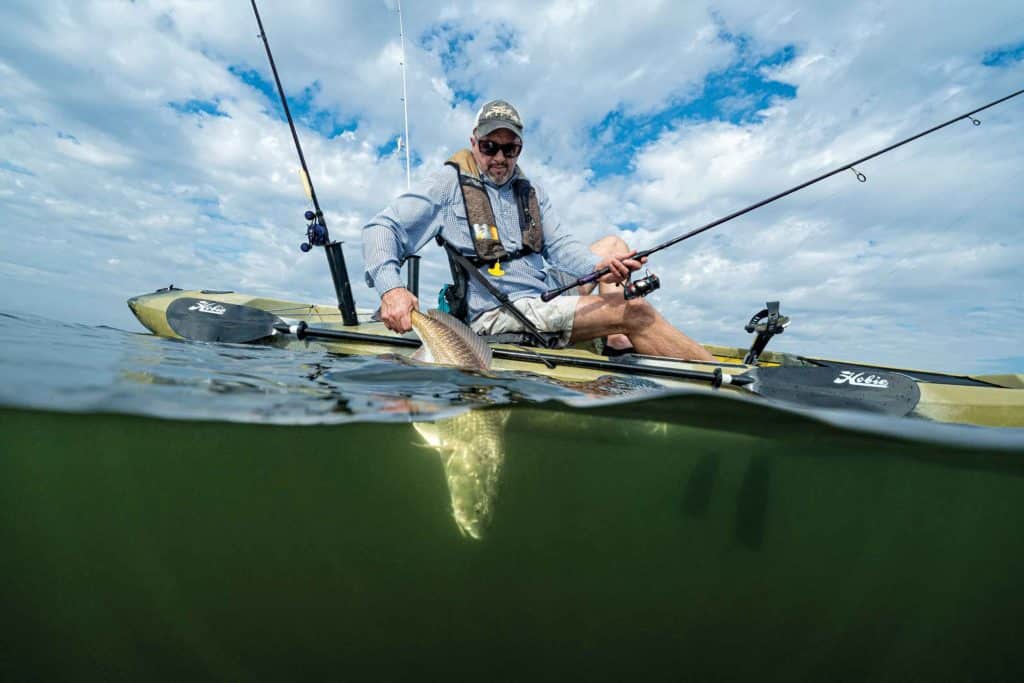
Access hyper-shallow waters with the utmost stealth, fish isolated shorelines, and explore remote backcountry locations. Kayak fishing sounds pleasantly promising, and anglers have taken notice.
And while kayaks, like all boats, require at least some effort and cost to outfit, launch and clean, the level of difficulty and expense drops significantly when compared with an outboard-powered fishing boat.
Praises and Caveats
“I like the simplicity and the ability to go on a moment’s notice,” says Chris Vecsey, an Old Town pro angler who works at Sam’s Bait and Tackle in Orange Beach, Alabama. “When you have narrow windows of time to get on the water, a kayak is the perfect craft for accessibility. It gives you range and efficiency.”
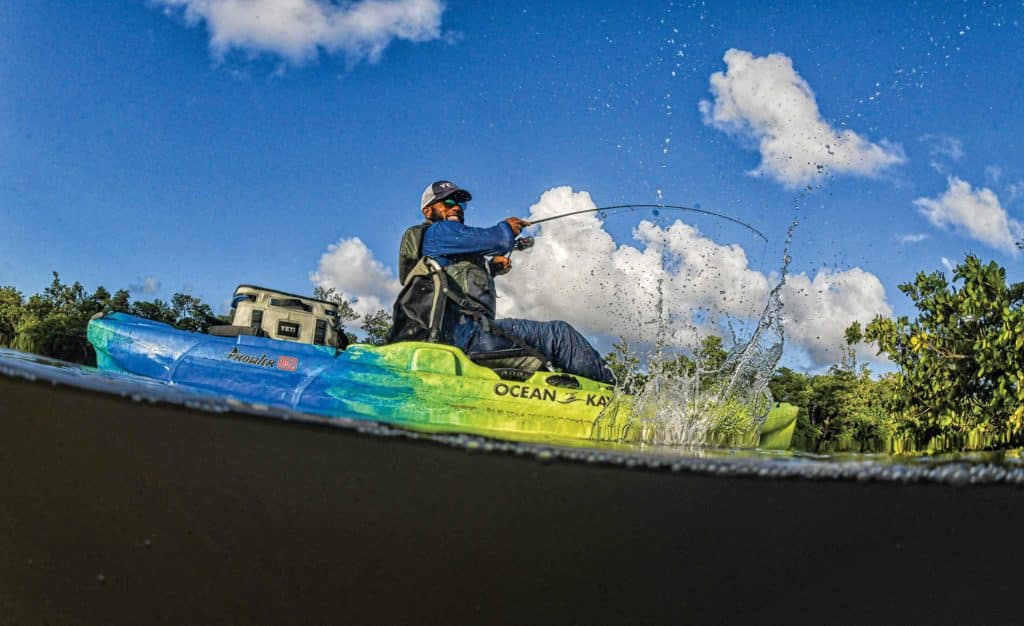
Despite the appeal and advantages, beginner kayak anglers also must understand their limitations. For instance, the sustainable speed for most kayaks tops out at about 5 mph, which restricts the distance you can travel from your launch.
First-time kayak buyers also might assume that their years on the water in power-boats give them all the experience they need to become kayak anglers. But they need a different set of skills. As well, every newcomer to kayak fishing must initially decide on a preferred type of propulsion: paddle, pedal or trolling motor.
Paddle boats launch more easily through the beach surf than boats with pedal propulsion. And in super-shallow water or when fishing marsh grass, propulsion gear that extends below the hull must be pulled up and placed on the deck.
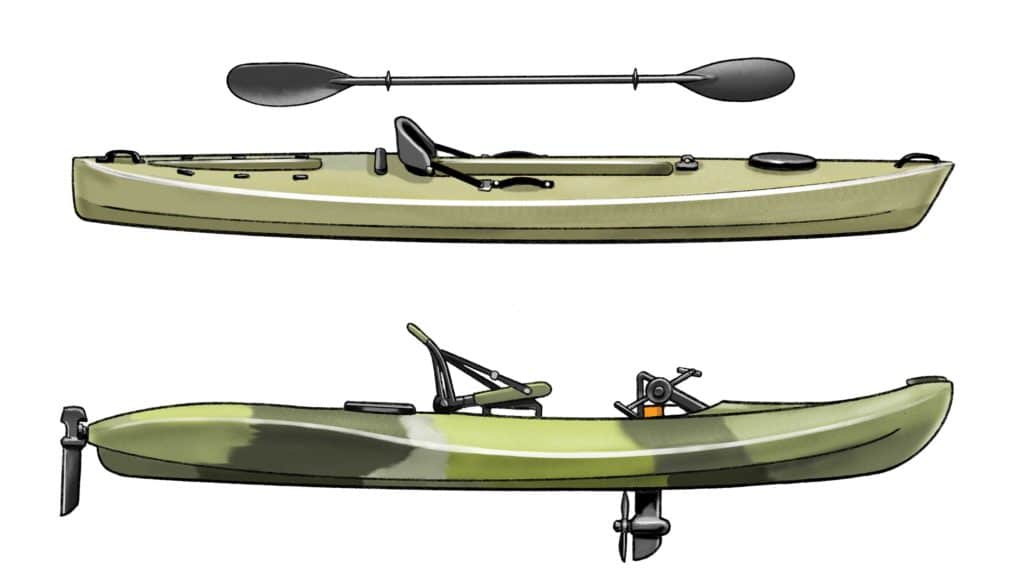
However, pedal kayaks and those with trolling motors take less effort to move, and they also keep your hands free for casting. Of course, they do cost more.
“You also kind of need to understand how kayaks behave in the water,” Vecsey says. “Not all of them are really that hydrodynamic. I think people should start in paddle kayaks.”
Making the Choice
Propulsion and boat length top the list of purchasing criteria. To choose the right boat for you, consider your own size, how much gear you want to take, and how you’ll store and transport the boat.
A 12-foot rigid-hull, sit-on-top kayak qualifies as the standard for fishing these days, but a smaller or larger option, from 10½ to 14 feet, can be a better choice.
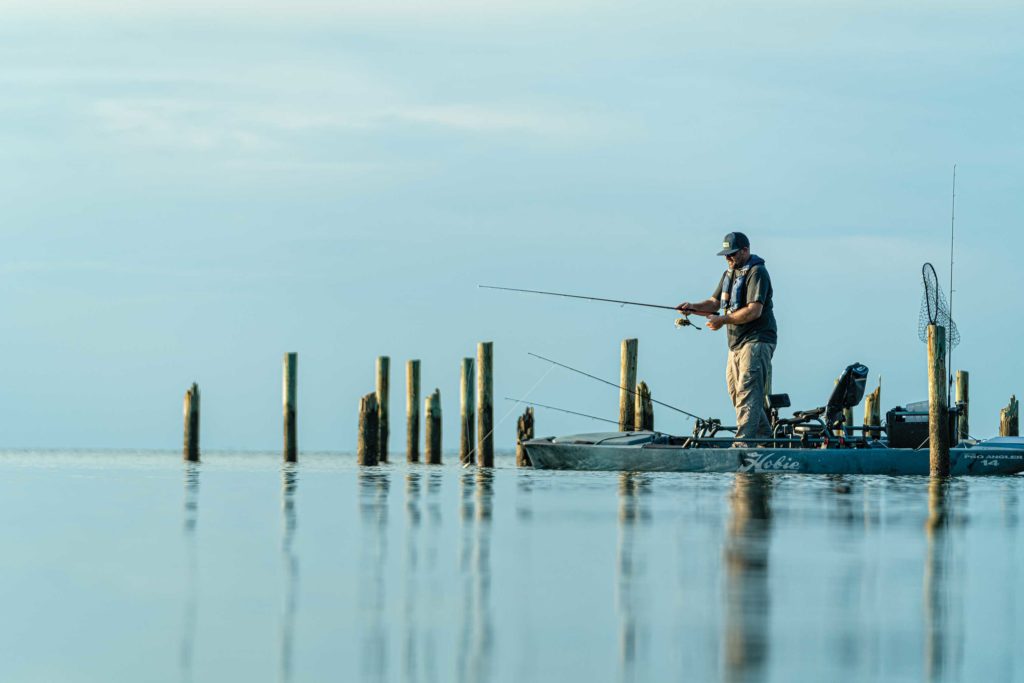
Kayak-makers note a maximum weight capacity for all of their models, and that’s generally in the 300- to 600-pound range. Be sure to add your weight, and that of your tackle and gear, and the boat itself for a final tally on poundage.
Smaller anglers must pay extra attention to boat weight. Depending on where you fish and how you transport the kayak, you might be carrying it, pulling it, or even lifting it above your head.
“It’s entertaining to watch me get my kayak out the door by myself,” says Bri Andrassy, a Hobie pro ambassador from North Palm Beach, Florida. “On the driveway, I put the beach wheels on, and then put it on the truck-bed extender and push it. You just need to anticipate how much a kayak is going to weigh.”
Andrassy says the truck-bed extender works well for her Mirage Passport 12.0, a pedal-drive boat that measures 12 feet and weighs 73 pounds unrigged.
Anglers without a truck can opt for car topping or trailering.
If your boat is a heavyweight, or if you’re fishing with a friend, a trailer capable of hauling one or two kayaks can be a perfect fit. But parking a trailer at home, at a beach launch, and even at some of the more rugged off-road sites can be a logistical problem.
Gearing Up
Common beginner mistakes include buying too much gear right off the bat, and failing to purchase a high-quality paddle.
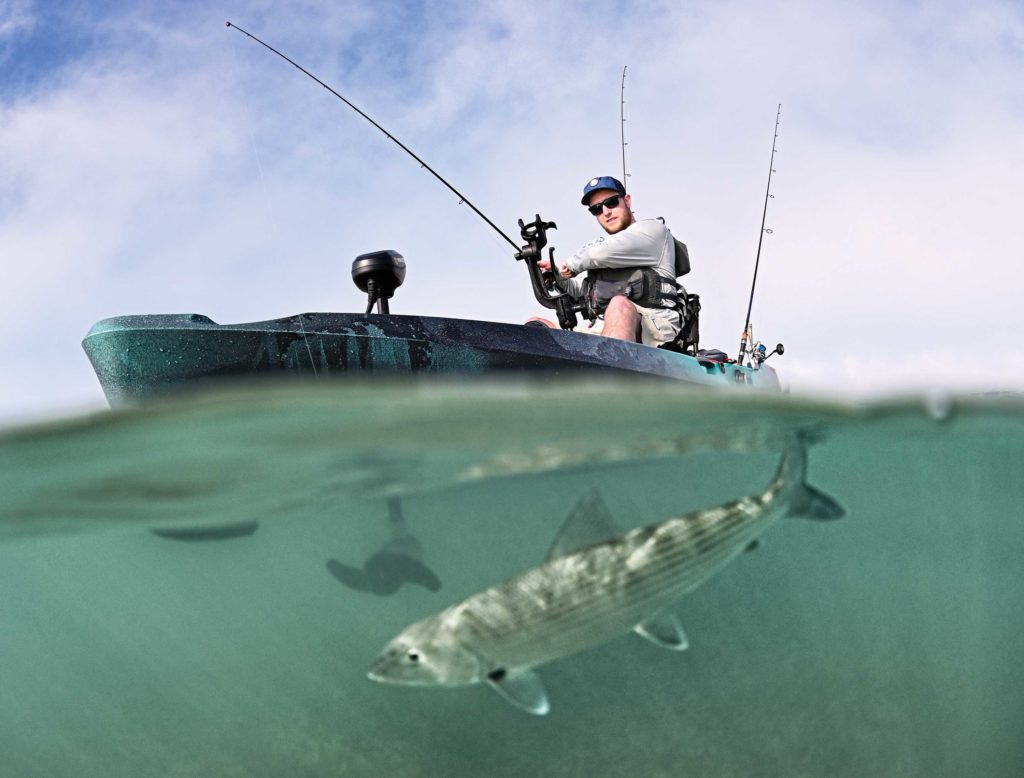
Kayak fishing mandates that you maximize space, so start slowly when purchasing gear. An auto-inflatable life jacket tops the list of necessities, followed by a carbon-fiber paddle. That lightweight paddle can help you get home if a pedal drive or trolling motor breaks.
Read Next: Kayak Fishing Off the Outer Banks
Until you’ve fished from a kayak, you don’t know your limitations when it comes to mobility and storage. Can you twist in your seat far enough to reach your gear aft? Can you nestle safely on your knees to reach a forward hatch? If you break off a fish or lose terminal gear, can you easily rerig in the boat?
Anglers solve some of these issues by carrying multiple rigged rods simply because tying on new leaders and hooks can be challenging from a seated position. To reach the line at the end of your rod, for instance, you must rest the rod butt on the bow so you can reach the tip. Having a spare, ready to go and within easy reach, solves this problem.
Beginning Approach
Before making your first kayak purchase, be sure to demo lots of boats. Many dealers offer special demo days. Some actually offer periodic guided fishing trips for anglers to test their kayaks.
Often any fee for such a trip can be applied to the kayak purchase. Once you have your boat, take time to get used to it before you load it down. Getting in and out on the water can be tricky. If you try boarding in water that’s too shallow, you’ll bottom out; too deep, and you can easily tip over.
Settle yourself in (wearing your life jacket), learn to paddle efficiently, and take the time to familiarize yourself with basic procedures.
“Keep your nose in the kayak,” Vecsey advises. “If you’re leaning over, landing a fish or reaching for a rod, don’t let your nose go over the edge of the kayak.”
Read Next: Fine-Tune Your Kayak Fishing Skills
Once you feel comfortable paddling, get used to whatever alternative propulsion you may have. As you gain experience, you might find you need additional accessories such as an anchor or mud stick, a push pole, extra rod holders, a fish finder or a livewell.
Remember: Always secure your gear—tie it down, bungee it or clip it.
You might also try some offshore adventures, but it’s important to know the local waters, check tides and surf reports, and watch the weather. Safety becomes all the more critical when you hook into that behemoth fish that takes you for a Nantucket sleigh ride.
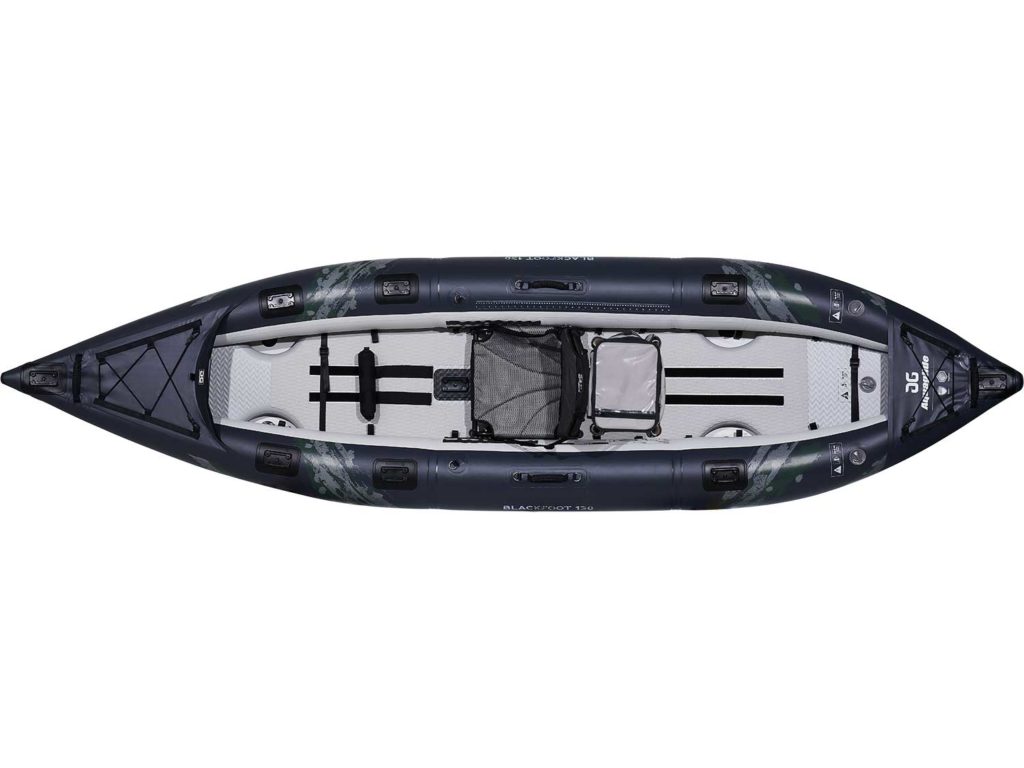
Compact Options
No room to store a rigid-hull boat?
If you have enough space to stash a backpack, you can still fish from a kayak. A handful of companies have designed inflatable models rugged enough for saltwater fishing.
Hobie’s 9- to 12-foot Mirage inflatables come with pedal power and stow in a bag.
Aquaglide’s Blackfoot Angler 130 fits in a backpack, weighs 33 pounds, and inflated measures 11 feet long. The Blackfoot Angler (pictured) comes with universal mounts and base plates for mounting rod holders and electronics.









